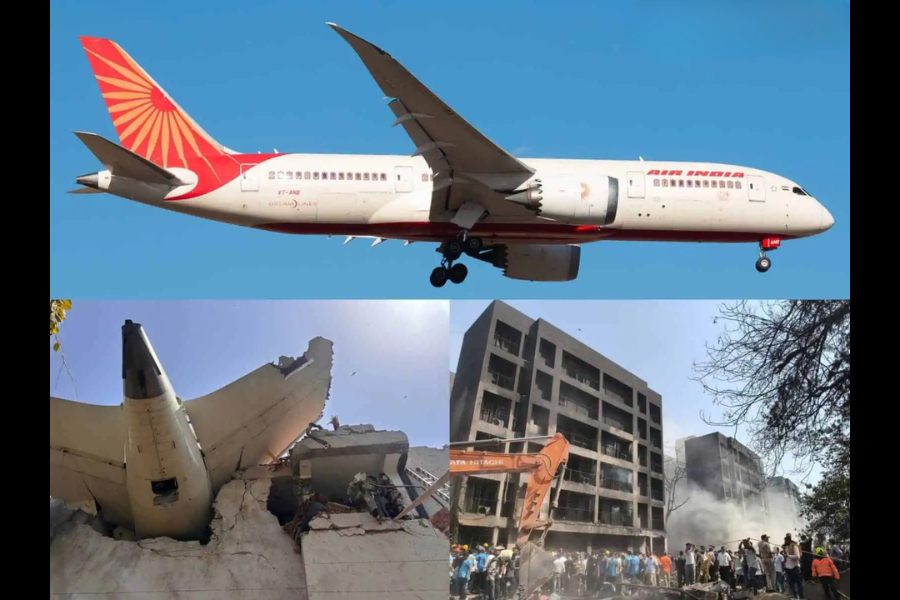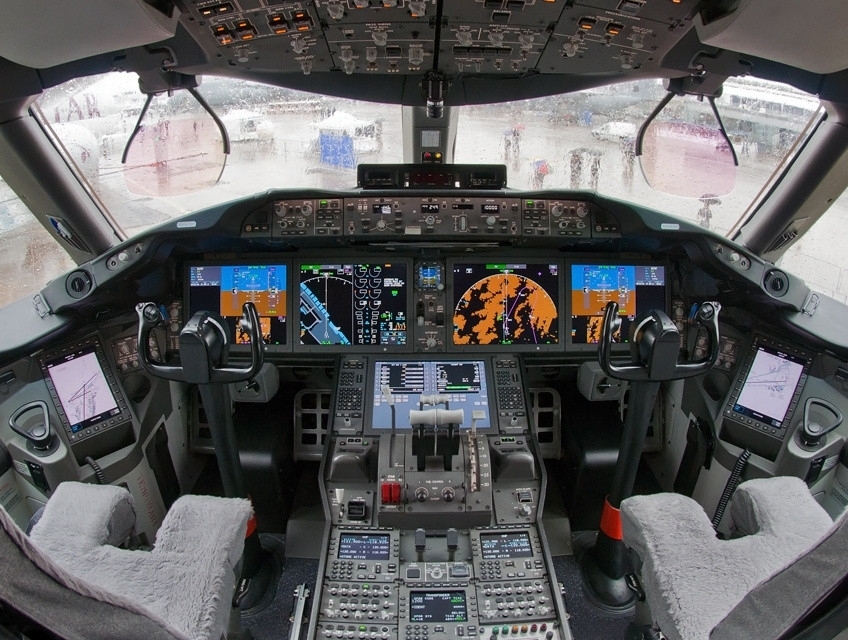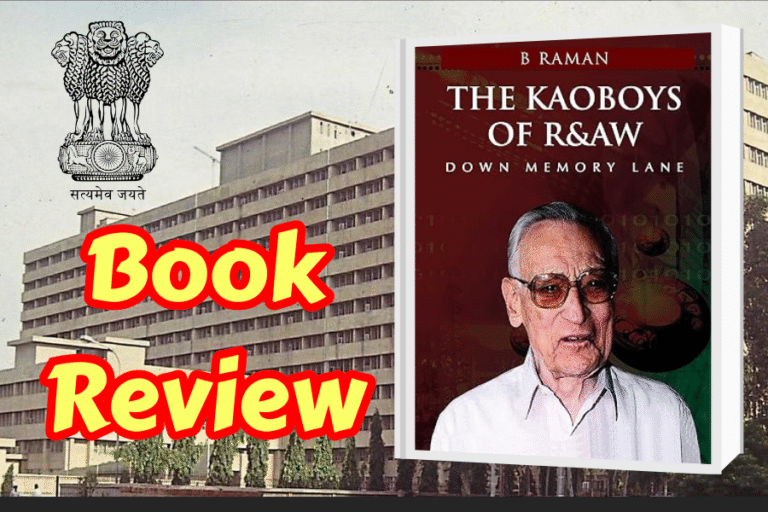(By Khalid Masood)
On 12 June 2025, Air India Flight 171, a Boeing 787-8 Dreamliner bound for London Gatwick from Ahmedabad’s Sardar Vallabhbhai Patel International Airport, crashed moments after takeoff, claiming 260 lives, including 241 of 242 passengers and crew and 19 people on the ground. The Aircraft Accident Investigation Bureau (AAIB) of India released a preliminary report on 11 July 2025, revealing that the fuel control switches for both engines transitioned from the “run” to “cutoff” position three seconds after lift-off, leading to a catastrophic loss of thrust. This article delves into the crash’s timeline, the AAIB’s findings, the aviation context, investigative challenges, and broader implications, drawing on verified web sources to provide a comprehensive analysis of one of India’s worst aviation disasters in decades.
I. The Incident: A Catastrophic 30-Second Flight
Air India Flight 171, registered as VT-ANB, departed Ahmedabad at 13:39 IST (08:09 GMT) on 12 June 2025, carrying 230 passengers and 12 crew members, including 169 Indians, 53 Britons, 7 Portuguese nationals, and 1 Canadian. The Boeing 787-8 Dreamliner, an 11-year-old aircraft delivered to Air India in 2014, was deemed airworthy with a valid Airworthiness Review Certificate until May 2026. Routine maintenance had been completed, and no dangerous goods were on board. The flight, piloted by Captain Sumeet Sabharwal (15,638 hours of experience, 8,600 on the 787) and First Officer Clive Kunder (over 1,100 hours on the 787), was cleared for takeoff from Runway 23 in clear weather.
The aircraft reached a takeoff speed of 155 knots (287 km/h) and climbed to 650 feet within seconds. However, approximately three seconds after lift-off (08:08:42 GMT), both fuel control switches moved from “run” to “cutoff”, starving the GE GEnx-1B engines of fuel and causing an immediate loss of thrust. Closed-circuit television (CCTV) footage captured the deployment of the Ram Air Turbine (RAT) at 08:08:47 GMT, indicating a power loss. Cockpit voice recordings (CVR) revealed confusion, with one pilot asking, “Why did you cut off?” and the other responding, “I did not do so.” At 08:08:52 GMT, the Engine 1 fuel switch was returned to “run”, followed by Engine 2 at 08:08:56 GMT, triggering an automatic engine relight. By 08:09:05 GMT, a pilot transmitted “MAYDAY, MAYDAY, MAYDAY,” and at 08:09:11 GMT, the aircraft crashed into the Byramjee Jeejeebhoy Medical College hostel, 1.5 km from the runway, exploding on impact.
The crash killed 241 of 242 people on board, including former Gujarat Chief Minister Vijay Rupani, and 19 people on the ground, including students and residents, with 67 others injured. The sole survivor, Vishwash Kumar Ramesh, a 40-year-old British-Indian seated in 11A next to an emergency exit, escaped with minor injuries after his section detached. The tragedy, the first fatal crash of a Boeing 787 Dreamliner since its introduction in 2011, sent shockwaves through India and the global aviation community.

II. The AAIB Preliminary Report: Key Findings
The AAIB’s 15-page preliminary report, released on 11 July 2025, under ICAO Annex 13 and India’s Aircraft (Investigation of Accidents and Incidents) Rules, 2017, outlined the sequence of events without assigning blame. Key findings include:
- Fuel Control Switches: At 08:08:42 GMT, both fuel control switches transitioned from “run” to “cutoff” within one second, causing a dual engine flame-out. This is highly unusual, as these switches, located in the throttle control module, are typically moved to “cutoff” only after landing or in emergencies like an engine fire, which the report did not indicate. The switches were returned to “run” approximately 10 seconds later, but the low altitude (650 feet) prevented sufficient thrust recovery.
- Cockpit Confusion: The CVR captured one pilot questioning the other about the cutoff, with the response denying responsibility. The report did not identify whether Captain Sabharwal (monitoring) or First Officer Kunder (flying) made these remarks, deepening the mystery.
- Aircraft Condition: The Boeing 787-8 was airworthy, with no reported defects in the fuel control switches since 2023. Fuel samples from the refuelling tanks were satisfactory, ruling out contamination. The Enhanced Airborne Flight Recorder (EAFR) and CVR, recovered by 16 June 2025, provided critical data, though limited fuel samples from the wreckage require further testing.
- No Mechanical Faults: The report found no evidence of mechanical failure, design flaws, or bird strikes, despite earlier speculation. The FAA’s 2018 Special Airworthiness Information Bulletin noted potential disengagement of the stop-lock mechanism in similar switches on Boeing 737s, but Air India did not inspect VT-ANB as it was advisory, not mandatory.
- Recovery Efforts: The pilots attempted to restart the engines, with Engine 1 regaining some thrust and Engine 2 relighting but not recovering power in time. The RAT provided emergency hydraulics, but the low altitude and rapid descent left insufficient time for recovery.
The AAIB, supported by Boeing, GE Aerospace, the US National Transportation Safety Board (NTSB), and UK investigators, emphasized that the investigation is ongoing, with a final report expected by 12 June 2026. No immediate actions were recommended for Boeing 787-8 or GE GEnx-1B operators.

III. Aviation Context: The Fuel Control Switches Anomaly
The fuel control switches are critical components in the Boeing 787’s cockpit, located in the throttle control module and guarded by brackets and a stop-lock mechanism requiring deliberate upward motion to move from “run” to “cutoff”. This design, dating back to the 1950s, minimizes accidental activation. Moving both switches simultaneously with one hand is “almost impossible,” according to a Canada-based investigator, making the AAIB’s finding extraordinary.
Captain Kishore Chinta, a former AAIB investigator, suggested a possible electronic trigger by the Electronic Control Unit (ECU), though no evidence supports this. The FAA’s 2018 bulletin on Boeing 737 switches raised concerns about disengaged locking mechanisms, but Air India’s maintenance records showed throttle module replacements in 2019 and 2023 for unrelated issues. Aviation expert Shawn Pruchnicki noted that if a pilot moved the switches, intentionally or not, the question remains: “Why?” The absence of cockpit video, lamented by NTSB’s Peter Goelz, complicates identifying the cause.
The Boeing 787 Dreamliner, operational since 2011, has a strong safety record, with over 1,100 aircraft in service globally. The GE GEnx-1B engines are reliable, and the AAIB found no systemic issues. However, the crash’s unique nature—a dual engine failure seconds after takeoff—prompts scrutiny of human factors, system design, and maintenance protocols.
IV. Investigative Challenges and Public Response
The AAIB investigation, led by Sanjay Kumar Singh with experts from Boeing, GE, and international partners, faces challenges:
- Data Limitations: Limited fuel samples from the wreckage and the absence of cockpit video hinder definitive conclusions. The EAFR and CVR, downloaded with NTSB assistance, provide critical but incomplete data.
- Speculation and Misinformation: India’s Ministry of Civil Aviation faced criticism for slow communication, creating an information vacuum filled by AI-generated misinformation on platforms like X. Civil Aviation Minister Ram Mohan Naidu urged restraint, emphasizing the preliminary nature of the report.
- Pilot Error Concerns: The Airline Pilots’ Association of India, led by Captain Sam Thomas, raised concerns about a perceived bias towards pilot error, demanding transparency. X posts speculated about electronic malfunctions, but these remain unverified.
Families of victims, including Ayushi Christian, whose husband died, and Nareshsinh Thakore, who lost his daughter and mother-in-law, expressed frustration over unanswered questions. The UK Department for Transport welcomed the report but awaits further details, given the 53 British nationals killed.
V. Impact on Air India and the Aviation Industry
The crash is a significant setback for Air India, privatized by the Tata Group in 2022. The airline reduced international Boeing 787 operations and faces scrutiny over maintenance practices. The Directorate General of Civil Aviation (DGCA) ordered safety checks on Air India’s 33 Dreamliners, implementing pre-departure takeoff parameter checks and maintenance inspections from 15 June 2025. Air India pledged full cooperation, expressing condolences and supporting victims’ families.
Boeing and GE Aerospace reiterated their support for the AAIB, with no immediate fleet-wide actions recommended. The crash’s implications for the Boeing 787’s safety record and Air India’s turnaround efforts are profound, prompting global regulatory attention.
VI. Broader Implications and Future Steps
The Air India Flight 171 crash raises critical questions about cockpit procedures, system reliability, and regulatory oversight. The AAIB will examine wreckage, conduct further fuel tests, and analyze pilot training and maintenance records. The absence of an Emergency Locator Transmitter (ELT) signal and discrepancies in RAT deployment timelines require investigation.
The tragedy underscores the need for enhanced cockpit video recording, stricter maintenance protocols, and robust communication to counter misinformation. As the AAIB works towards its final report, the aviation industry must balance technological advancements with human factors training to prevent such “rarest of the rare” incidents.
VII. Conclusion
The Air India Flight 171 crash on 12 June 2025 in Ahmedabad, killing 260 people, remains a chilling enigma. The AAIB’s preliminary report highlights the inexplicable movement of fuel control switches to “cutoff” three seconds after takeoff, causing a dual engine failure. Despite the pilots’ attempts to recover, the low altitude doomed the Boeing 787-8 Dreamliner. With no evidence of mechanical faults or external factors, the investigation focuses on human or electronic triggers, though answers remain elusive. The tragedy has galvanized India’s aviation sector, prompting safety checks and international cooperation. As the AAIB, supported by Boeing, GE, and the NTSB, continues its probe, the world awaits clarity to honour the victims and prevent future disasters.








One Comment